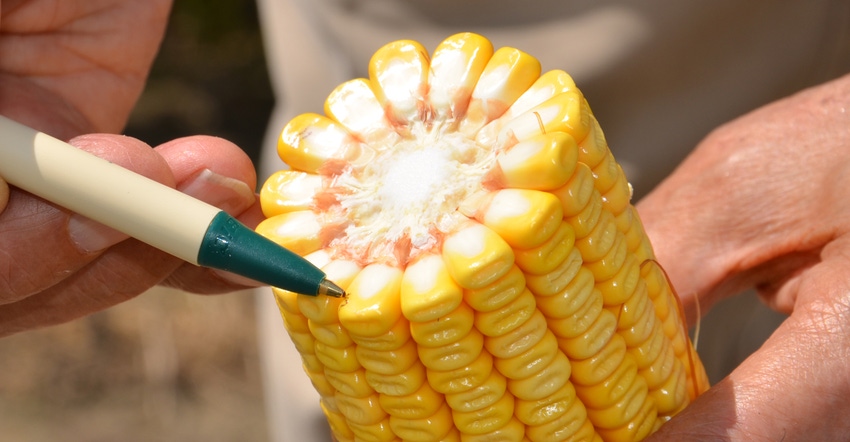
You are recording respectable farm average yields, but you hear talk of 250 to 300 bushels per acre. How can you get there consistently? Brian Denning believes it starts with understanding how various hybrids add yield during the season.
“Unless you start analyzing where those yield results come from for each hybrid, it may be difficult to move yields higher,” says Denning, technical agronomist for Stewart Seeds, based near Evansville, Ind.
Denning uses this example. “Suppose you have a hybrid that puts on lots of rows of kernels per ear, with good ear length, but kernels are only average size,” he explains. “Then suppose you also plant a second hybrid that doesn’t put on as many rows of kernels per ear, but forms longer, bigger kernels.
“If you know about these differences, you can make management decisions on various inputs and practices during the season.”
Control what you can
You can’t control rainfall or the temperature, Denning acknowledges. But you can control nitrogen rate and timing, planting date, to an extent, and you can limit soil compaction.
If you have the hybrid that puts on 20 rows of average-size kernels, do all you can to keep it happy and healthy early in the season, he advises. Make sure nitrogen is adequate and minimize stress, including from soil compaction. Most hybrids decide on number of rows per ear around V6 to V7, and it’s tightly controlled by genetics, although environment plays a role. Number of kernels per row is typically determined from V 12 to about two weeks before tasseling.
“Do what you can to maximize number of ovules per ear,” Denning stresses.
The two weeks after pollination are critical for all hybrids, Denning continues. “Think of it as the time when plants are building the grain bin. Cell division is going on and building the infrastructure on each ear. Then during the rest of grain fill, plants fill the bin by adding starch to kernels.”
Population vs. kernel count
Plants per acre vs. kernels per ear is an ongoing battle when you’re seeking higher yields, Denning says. As population increases, ears tend to produce fewer kernels per ear.
Beginning a couple years ago, Denning began experimenting with a concept that in theory might allow more light onto lower leaves during the critical grain fill period. In a test with two replications, he planted 28,000 and 40,000 seeds per acre in alternating rows. The idea was that the row with fewer plants per acre would let more light in to help photosynthesis on the thicker row. He saw a 16.5 bushel per acre increase compared to a standard 34,000 rate. But he lost in a similar trial in 2019, and in 2020, he didn’t pick up the same difference.
“We hope to repeat it this year, only we will also alternate hybrids row-by-row,” he explains. “We’ll plant a hybrid that flexes well at lower population in the low-pop rows and a hybrid that responds to higher populations in the other row.”
Part of the theory is tricking plants in the thicker row into sensing they have less competition because there are fewer plants in the row beside them, he says. Extra sunlight would also offer a big advantage. He believes it’s worth another look.
About the Author(s)
You May Also Like




